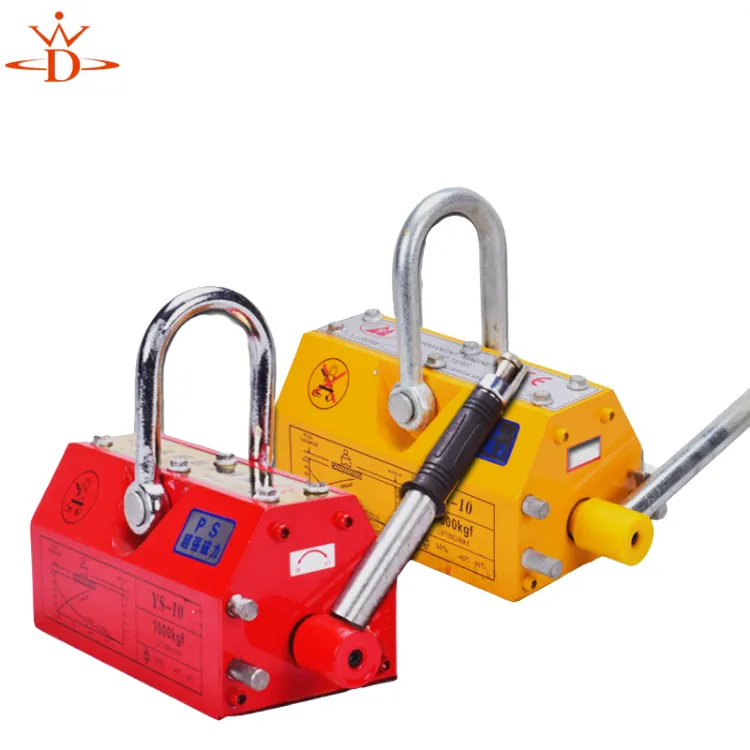steel plate magnetic lifter
The Magnetic Lifter A Game Changer for Steel Plate Handling
In the realm of industrial applications, the efficient handling of heavy materials is crucial for maintaining productivity and safety. One of the most innovative solutions to emerge in recent years is the magnetic lifter, particularly designed for steel plates. This technology not only simplifies the lifting process but also enhances operational efficiency in various settings such as warehouses, manufacturing plants, and construction sites.
Understanding the Magnetic Lifter
A magnetic lifter is a device that utilizes powerful magnets to lift and move ferromagnetic materials, such as steel plates. The mechanism typically incorporates an array of permanent magnets and an on/off switch that allows users to engage or disengage the magnetic force as needed. The design ensures a strong grip on steel plates, enabling safe lifting without the use of slings or chains, which can sometimes slip or cause damage.
The principle behind a magnetic lifter is relatively simple. When activated, the magnetic field pulls the steel plate towards the lifter, creating a secure bond that can support heavy loads. This makes magnetic lifters particularly advantageous in handling steel plates, which are often large, heavy, and difficult to maneuver.
Advantages of Using Magnetic Lifters
1. Efficiency and Time-Saving Magnetic lifters significantly reduce the time required to lift and move steel plates. With their straightforward operation, workers can attach and detach the lifter quickly, allowing for smoother workflows and reduced downtime.
2. Safety Safety is a paramount concern in any industrial environment. Traditional lifting methods can be risky, with the potential for slippage and accidents. Magnetic lifters provide a more secure means of lifting heavy materials, minimizing the risk of workplace injuries. Furthermore, many models come equipped with safety locks that prevent accidental disengagement.
steel plate magnetic lifter

3. Versatility Magnetic lifters are suitable for a variety of steel plate sizes and thicknesses. They can be used in various industries, including manufacturing, construction, and shipping, making them an invaluable tool for handling diverse steel products.
4. Reduced Equipment Wear By eliminating the need for slings or chains, magnetic lifters reduce wear and tear on traditional lifting equipment. This not only saves on maintenance costs but also extends the lifespan of the tools and machinery used in steel plate handling.
5. Cost-Effectiveness While the initial investment in a magnetic lifter may be higher than traditional lifting methods, the long-term savings in labor costs, reduced injury rates, and maintenance make them a cost-effective choice for many businesses.
Choosing the Right Magnetic Lifter
When selecting a magnetic lifter for steel plates, several factors should be considered. The lifting capacity is paramount; it is essential to choose a lifter that can handle the maximum weight of the materials you will be moving. Additionally, consider the plate thickness, the size of the plates, and the operating environment. Some lifters are designed for specific conditions, such as wet or corrosive environments.
Conclusion
In conclusion, magnetic lifters have revolutionized the way industries handle steel plates. With their unparalleled efficiency, safety, and versatility, they represent a significant advancement in material handling technology. By investing in magnetic lifters, businesses not only streamline their operations but also contribute to a safer work environment. As industries continue to evolve, embracing innovative solutions like magnetic lifters will be critical in staying competitive and efficient. Whether in a factory, a shipping yard, or a construction site, the magnetic lifter stands as a reliable and effective tool for the modern industrial landscape.
-
Unlock Seamless Relocation with Our Heavy Equipment Moving ExpertiseNewsJun.06,2025
-
Unleash Unrivaled Flexibility with Our Adjustable Gantry CraneNewsJun.06,2025
-
Unleash Heavy-Duty Efficiency with Our Industrial Gantry Crane SolutionsNewsJun.06,2025
-
Revolutionize Steel Handling with Our Magnetic Lifter RangeNewsJun.06,2025
-
Master Equipment Mobility with Premium Machinery Mover SolutionsNewsJun.06,2025
-
Elevate Your Material Handling with Magnetic Lifter TechnologyNewsJun.06,2025
-
YS Permanent Lifting Magnets: The Smarter Way to Handle SteelNewsMay.22,2025
